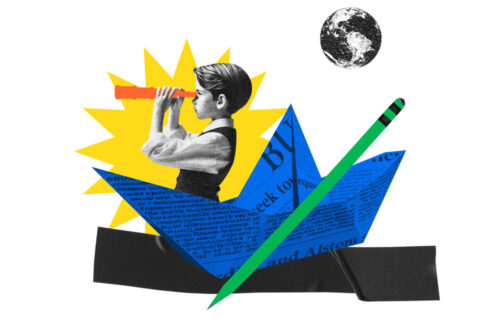In this comparison between Canva and Photoshop, we will look at the key differences between these two graphic design tools and determine which one is more suitable for different design needs. Canva is a multi-purpose design tool that is easy to use and has a gentle learning curve, while Photoshop is a professional design tool specifically designed for complex image editing and serious graphic design work.
Key Takeaways:
- Canva is a user-friendly design tool suitable for beginners and non-design professionals.
- Photoshop is an advanced professional-grade tool best suited for professional users and those willing to invest time in learning.
- Canva is primarily a web app, while Photoshop is a desktop application.
- Canva offers different pricing plans, including a free version, while Photoshop requires a subscription.
- Canva has an easy-to-use interface, while Photoshop is more complex but offers advanced tools for professionals.
- Canva has a large collection of templates, while Photoshop offers premium templates through Adobe Stock.
- Photoshop has more advanced photo editing capabilities than Canva.
- Both Canva and Photoshop support plugins and integrations with other third-party apps to enhance their functionality.
Canva: User-Friendly Design for Beginners
Canva is a user-friendly platform with a gentle learning curve, making it ideal for beginners, non-design professionals, and those who need quick design solutions. This online design tool offers a range of user-friendly features, including templates, stock images, and basic image editing tools. Canva’s web-based platform can be accessed through a browser or a downloadable desktop app, making it accessible and convenient.
Canva’s user interface is intuitive and easy to navigate, making it a great choice for those new to design. The platform offers a range of templates, including posters, business cards, and social media graphics, making it easy to create professional-looking designs in a matter of minutes. Canva’s selection of stock images and illustrations eliminates the need to create designs from scratch, making it an efficient solution for those who need quick design solutions.
Canva is also suitable for creating a wide range of designs, including online and printed materials, photo editing, making videos, and web design. The platform offers different pricing plans, including a free version and paid plans for individuals and teams.
Photoshop: Advanced Professional-Grade Tool
On the other hand, Photoshop is an advanced, professional-grade tool with extensive functionality, making it best suited for professional users and those willing to invest significant time into learning. The desktop application allows for precise control over image manipulation and editing at the pixel level. Photoshop offers a vast selection of tools for image manipulation, including advanced features like layers, masks, and channels. Additionally, Photoshop has the ability to handle large and complex files, making it the go-to choice for high-resolution output and advanced graphic design projects.
However, due to its advanced features, Photoshop has a steeper learning curve compared to Canva. It also requires a powerful computer to run effectively, which can be a drawback for those without access to high-end devices. Nevertheless, for professional graphic designers and visual professionals, Photoshop remains the preferred tool for creating stunning and complex designs.
Platform Accessibility
When choosing between Canva and Photoshop, platform accessibility is a crucial consideration. Canva is a user-friendly, web-based design tool that can be accessed via a browser such as Safari, Google Chrome, or Microsoft Edge. This makes it easy to use and accessible for beginners and those without any design experience.
On the other hand, Photoshop is a desktop application that requires installation on a computer. While this provides greater control over design elements and advanced image editing features, it also has a steeper learning curve and may not be as accessible to inexperienced users.
In terms of pricing, Canva offers different subscription plans, including a free option, while Photoshop has a subscription-based model with a higher cost. This may impact your decision if you have a tight budget or specific design needs.
When it comes to templates, Canva has over 610,000 available, while Photoshop offers a smaller selection. However, Photoshop users can access additional premium templates through Adobe Stock.
Both Canva and Photoshop offer integrations with other apps, but Canva has around 114 available plugins compared to Photoshop’s 2,200. This may impact your decision if you need to integrate with specific apps or tools.
In summary, Canva is a web-based design tool that is accessible and easy to use, making it ideal for beginners and those in need of quick design solutions. Photoshop is a professional-grade tool suited for experienced designers who require advanced editing capabilities. Ultimately, your choice will depend on your individual design needs and level of experience.
Pricing and Plans
When it comes to pricing, Canva offers three pricing plans: Canva Free, Canva Pro ($14.99 per month for one user), and Canva for Teams (variable pricing starting at $29.99 per month for up to 5 users). The free version provides limited features and templates, while the Pro version includes access to a larger library and brand controls. If you are a beginner or a non-design professional looking for an affordable tool, Canva is a great choice.
On the other hand, Photoshop is subscription-based, and it costs $20.99 per month. Photoshop also offers a free trial, which is great if you want to try it out before committing. The pricing difference reflects the fact that Photoshop is a professional-grade tool with advanced features.
If you are looking to create social media posts, presentations, and small-scale print projects, Canva might be the better option. However, if you need to work on high-resolution, print-quality projects or complex image editing, Photoshop is the way to go.
In summary, while Canva is more user-friendly and affordable, Photoshop is better suited for professionals who require more advanced photo editing and design features.
User Interface Comparison
In terms of user interface, Canva has an easy-to-use interface with labeled tools and an intuitive navigation system. Even beginners can easily create designs using Canva’s simple drag-and-drop features. Canva’s web-based platform and desktop apps are easily accessible, regardless of the device you’re using.
In contrast, Photoshop has a more complex interface, with a steeper learning curve. It’s a locally processed desktop application, which means it requires more powerful hardware. However, experienced designers and photographers appreciate Photoshop’s advanced control over design elements and precise editing capabilities.
While Canva’s interface caters to beginners, Photoshop offers extensive customization options that may not be required for small-scale projects. Ultimately, the choice between Canva and Photoshop depends on your design needs and level of experience.
Template Selection
One of the key differences between Canva and Photoshop is the availability of templates. Canva offers a vast collection of templates and stock media, making it easy to find design inspiration and create professional-looking designs quickly and easily. Whether you need to create social media posts, business cards, or presentations, Canva has a template for you.
Photoshop, on the other hand, offers a smaller selection of templates but with the ability to access additional premium templates through Adobe Stock integration. Photoshop is better suited for professional users who require more control and precision in their designs. With extensive photo editing features, robust typography and graphics options, and advanced functionality, Photoshop is the go-to tool for high-resolution and print-quality projects.
Ultimately, the choice between Canva and Photoshop depends on your specific design needs and user level. If you are a beginner or need quick design solutions, Canva is the way to go. If you are a professional user who requires advanced functionality, precision, and control, Photoshop is the tool for you. While Canva follows a freemium model with optional paid upgrades, Photoshop follows a subscription-based pricing model.
Photo Editing Comparison
When it comes to photo editing tools, Photoshop offers more advanced features compared to Canva. With Photoshop, you can expect robust photo manipulation and editing features, including advanced options for color correction, retouching, and compositing. Photoshop also offers precision controls for typography and graphics, making it the go-to choice for high-resolution, print-quality projects.
Canva, on the other hand, offers basic photo editing features that are user-friendly and easy to use. It’s perfect for beginners and non-design professionals who need quick design solutions. Canva also offers a large collection of templates and an extensive library of stock photos and graphics to help you bring your design ideas to life.
While Photoshop is more powerful, it also comes with a steeper learning curve and requires a significant investment of time to master. Canva, on the other hand, has a gentle learning curve and is more affordable with a subscription-based pricing model. Choosing between the two ultimately depends on your specific needs and level of expertise in graphic design.
Third-Party Integrations and Plugins
Both Canva and Photoshop offer the ability to integrate with third-party apps and plugins to enhance their functionality. Canva has a wide range of app integrations, including Dropbox, Google Drive, and Trello, making it easy to collaborate with team members and share files. It also has a built-in app store that offers plugins for social media scheduling, stock image libraries, and more.
Photoshop provides access to a range of plugins, including those for creating 3D models, enhancing images, and add-ons for specific industries like architecture and film. While the number of plugins available for Photoshop is not as extensive as those available for Canva, they are still highly useful for advanced design work.
It’s important to note that while third-party integrations and plugins can enhance the functionality of both Canva and Photoshop, they are not essential to the basic use of the tools. It’s up to the individual user to decide which integrations and plugins would be most useful for their specific design needs.
Conclusion
In conclusion, Canva and Photoshop cater to different design needs and user levels. Canva is a user-friendly tool that is perfect for beginners or those who need quick design solutions. With its wide range of templates, Canva is a great choice for those who need to create graphics or designs without much experience. Its basic photo editing tools are suitable for simple touch-ups and adjustments.
However, if you are a professional designer or someone who is willing to invest the time in learning a more advanced tool, Photoshop may be the better option for you. With its desktop application and extensive functionality, Photoshop is geared towards professionals who require precision and advanced editing capabilities. Its photo manipulation features and precise control over design elements make it a powerful tool for the most demanding design projects.
When it comes to pricing, Canva offers a freemium model with optional paid upgrades, while Photoshop has a subscription-based pricing model. This means that with Canva, you can start designing for free and upgrade as needed, while with Photoshop, you’ll need to pay a monthly fee to access its features.
Ultimately, the choice between Canva and Photoshop depends on your specific design needs and skill level. If you’re a beginner or need a quick design solution, Canva is a great choice. If you’re a professional or have the time to invest in learning a more advanced tool, then Photoshop is the better option. So, which one will you choose?




